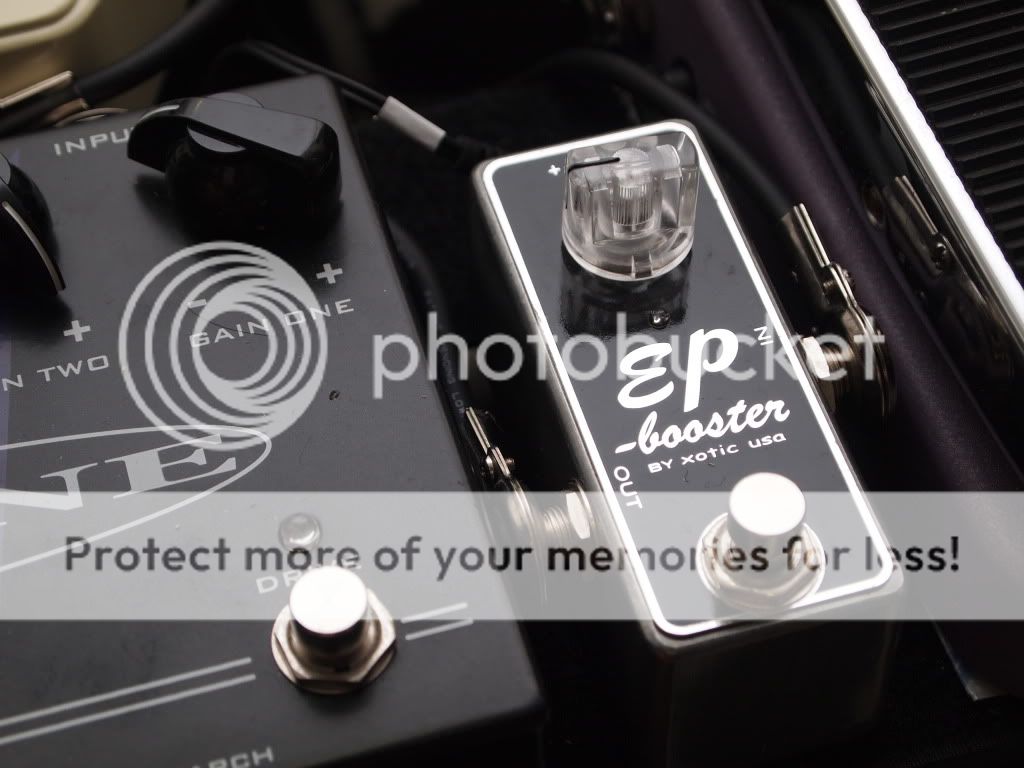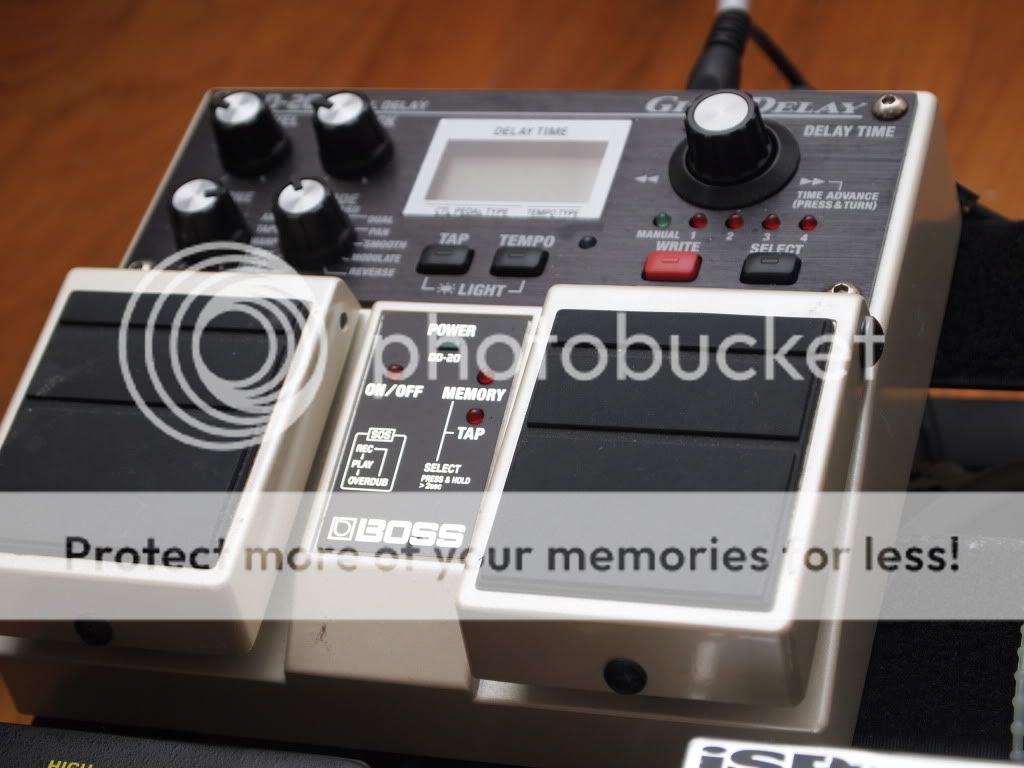An electric guitarist uses pedals to achieve his tone in the same way an artist uses a palette of colours to paint; every pedal's tone has a unique nuance, and when blended with other pedals in the right proportion, gives a guitarist his signature sound, in tandem with his choice of guitar, amp, and most importantly, his playing style.
I've built this pedalboard with two objectives in mind: to be able to recreate similar tones live and in the studio, and to be as diverse as possible to cover the spectrum of British and American guitar tone.
I've built this pedalboard with two objectives in mind: to be able to recreate similar tones live and in the studio, and to be as diverse as possible to cover the spectrum of British and American guitar tone.
It starts with a wah pedal, and I've chosen the Budda Bud-wah. This comes first to ensure the pedal receives the cleanest possible signal from the guitar. While it doesn't have the widest of available sweep range, it compensates by being very vocal-like in its expression. Its highs aren't shrill, and its lows aren't honky, which to my ears makes it very warm and wraps around the notes rather than cause them to stick out too much. I didn't know this until recently, but it's also the wah Andy Timmons uses.
Compression is actually meant to keep your guitar in a specific dynamic range so that you won't "disappear" into the mix. I especially like compressors with some EQ tweakability to adjust how bright or how dark you want the compression to be. This is the Visual Sound Comp 66, which is the Compressor side of the famous Route 66 pedal. I use the Tone knob as the Master EQ of my rig, controlling the amount of high-end required between a Les Paul, a Strat and Tele.
Now comes my overdrive section, which I admit has quite a few pedals (half of my board is occupied by drive). I wanted to be as diverse as possible when it came to overdrive, so I opted for pedals which are voiced more like "amps-in-a-box". I like the chime of a Vox AC-30, the sponginess and warmth of a Fender Deluxe Reverb, and the bluesy roar of a Marshall JTM-45. I couldn't decide on just one...so I got three distinct pedals dialled to emulate those tones.
I have two EP boosters, which I've explained here how I've set them up, and the first helps to push my main overdrive pedals harder to get more gain and compression out of them. This is run at 18V and is in the Vintage setting (bright switch off, bass boost off).
The Carl Martin AC Tone is the closest you'll get to a Vox AC-style sound. I've owned an AC15 before, and can attest to its authenticity, with the best function being the Cut, which works just like the real deal! This pedal's Gain One is nearly always on because I switch between a clean tone and a slight crunch tone with my guitar volume. Gain Two, independently voiced, is cranked all the way for my dirty crunch (naturally). This pedal also has a nice pure clean boost which thickens up the rest of the overdrives in the chain.
If you're running this pedal by itself, you're able to get a boxy Vox roar by cranking the boost about midway, leaving it on, and adjusting the gain to taste with the Gain channels.
The next two pedals are my favorites: the BB Preamp and the Paul Cochrane Timmy. One way to judge how much a pedal is worth is to see how frequently it appears on the buy/sell forums--and these pedals pop up very rarely. The BB is the most versatile of the Xotic range (which includes the RC and AC Boosters) with a very musical EQ section. I've set it up with the gain cranked all the way and a slight treble boost, which sounds great for those thick and cutting riffs, and fluid, singing leads.
The Timmy is the best transparent overdrive you'll ever get. It takes what you give it and just puts out more--so a Strat still sounds like a Strat, but beefier and fatter, and a Les Paul still sounds like a Les Paul, but with greater edge and articulation. It also has atypical reverse taper knobs, so I've actually set it up for a treble cut (contrary to what the picture suggests). It's also set in the 3rd switch position, which is the most compressed and to my ears emulates the nuances of 6V6 power tubes.
The 2nd EP Booster is the Version 2, set to unity gain and helps clean up the overdriven tones in the right direction--like an EQ pedal with all the right settings tweaked in. Pictured next to it is a simple TYMC tap tempo switch for my Boss DD-20, and I hooked it up using a spare karaoke cable I found lying around the house.
The next two pedals are inverted to allow easier signal patching, otherwise I'll have to use much longer patch cables. I have an ISP Decimator to cut out the noise from my overdrive section, and I have a SansAmp GT2 for amp simulation.
Alright, I'll admit, I'm still pretty much a digital junkie at heart. These things never die on you, unlike an amp which can change its character drastically on a bad day. The SansAmp GT2 works best as an amp simulator straight to the PA, so don't run this like you would a stompbox into an amp. Having the EP Boosters really helps to warm up the signal to recreate the organic character of an amp. I've found that the best setting so far is the British amp on Clean with a Center or Off Axis mic (Off Axis sounds better for recording). The first time I used this for a show, the sound guy was sure I was hiding an amp somewhere off-stage.
The Korg Pitchblack is quickly becoming a staple pedal on my friends' pedalboards simply because it's cheap. And I'll admit, that's the only reason why I got it. It's wired to the tuner-out of my volume pedal.
Buying a pedal on impulse is never a good idea. I got the Visual Sound H20 because I needed a delay and a chorus for overseas gigs, and when I returned, I was determined to sell it. However, nobody wanted to pick it up, so it's found its way onto my main pedalboard! The delay side of this pedal has a strange side effect of taking my entire guitar tone and clean it up somehow (maybe because it's buffered-bypass), so it's almost always on.
Alright, I'll admit, I'm still pretty much a digital junkie at heart. These things never die on you, unlike an amp which can change its character drastically on a bad day. The SansAmp GT2 works best as an amp simulator straight to the PA, so don't run this like you would a stompbox into an amp. Having the EP Boosters really helps to warm up the signal to recreate the organic character of an amp. I've found that the best setting so far is the British amp on Clean with a Center or Off Axis mic (Off Axis sounds better for recording). The first time I used this for a show, the sound guy was sure I was hiding an amp somewhere off-stage.
The Korg Pitchblack is quickly becoming a staple pedal on my friends' pedalboards simply because it's cheap. And I'll admit, that's the only reason why I got it. It's wired to the tuner-out of my volume pedal.
Buying a pedal on impulse is never a good idea. I got the Visual Sound H20 because I needed a delay and a chorus for overseas gigs, and when I returned, I was determined to sell it. However, nobody wanted to pick it up, so it's found its way onto my main pedalboard! The delay side of this pedal has a strange side effect of taking my entire guitar tone and clean it up somehow (maybe because it's buffered-bypass), so it's almost always on.
This is an OLD pedal, with the serial number dating it to the early 80's. The previous owner modded it to run on 18V and added a Filter Matrix on/off switch so that he doesn't need to bend down to toggle the Filter Matrix switch. I use this for nice Police-style flange and faux Leslie tones.
Last but not least, I use a Boss Giga Delay, or more commonly known as the DD-20. I can't afford an analog delay, and I probably will never own an Echoplex, but I can live with something that provides warm delays, tap tempo control, an awesome-sounding true stereo out delay (the Pan function is my favorite), and being able to save 5 presets.
In summary, my board provides essentially 3 kinds of sounds: drive, chorus/flange and delay, which is more than enough to cover the basic, core tone of the electric guitar.




















0 comments:
Post a Comment